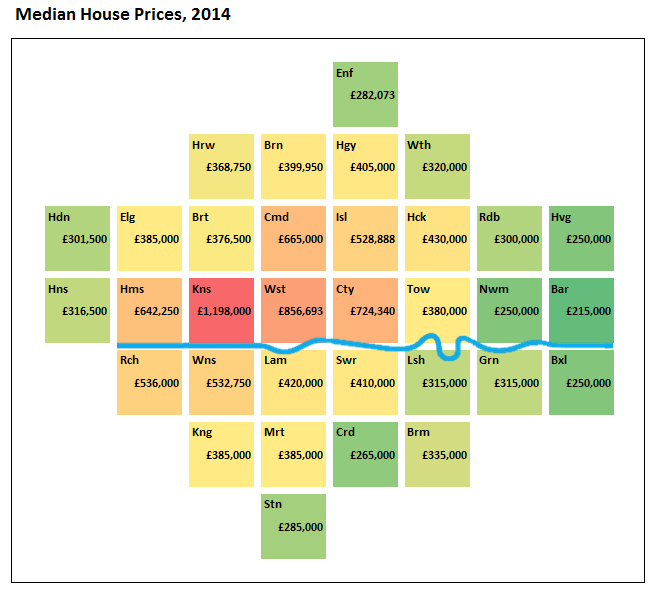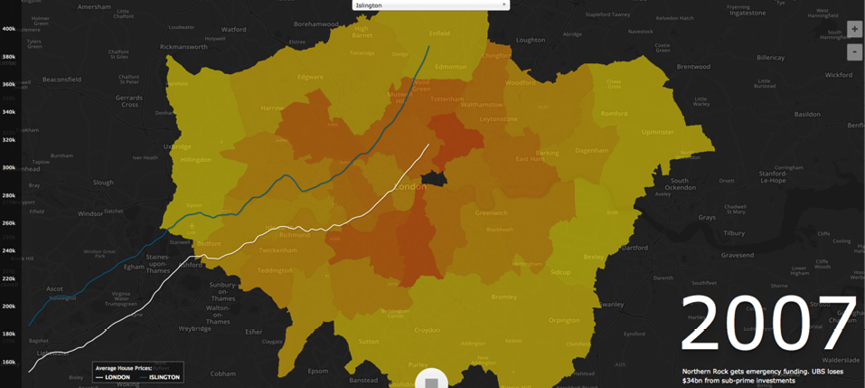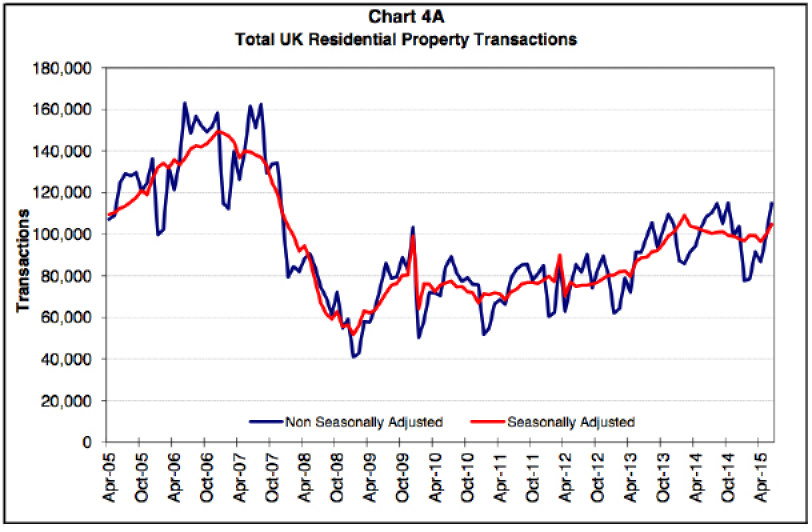The Global Impact of Open Data
United Kingdom's HM Land Registry Price Paid Data
Get set, go!
by Becky Hogge
Reference
1 Land Registry. (2006, April). Internet Archive copy of webpage: Welcome to Land Registry’s 10-year strategic plan. Retrieved from Internet Archive: http://web.archive.org/web/20070602044143/http://www.landregistry.gov.uk/strategy/10yearplan/
2 Land Registry. (2006, April). Internet Archive copy of webpage: Welcome to Land Registry’s 10-year strategic plan. Retrieved from Internet Archive: http://web.archive.org/web/20070602044143/http://www.landregistry.gov.uk/strategy/10yearplan/
3 KPMG. (2011). HMLR Feasibility Study.
4 Hogge, B. (2011, May). Open Data Study: New Technologies. Retrieved from Transparency and Accountability Initiative: http://transparencyinitiative.theideabureau.netdna-cdn.com/wp-content/uploads/2011/05/open_data_study_final1.pdf
5 Arthur, C. (2010, November 19). Met Office and Ordnance Survey to be part of ‘public data corporation’. Retrieved from The Guardian: http://www.theguardian.com/technology/2010/nov/19/government-public-data-corporation
6 Department for Business, Innovation & Skills and Cabinet Office. (2011, August 04). A consultation on data policy for a Public Data Corporation: government response. Retrieved from gov.uk: https://www.gov.uk/government/consultations/data-policy-for-a-public-data-corporation
7 Cabinet Office. (2011, November 29). Policy paper: Open data measures in the Autumn Statement 2011. Retrieved from gov.uk: https://www.gov.uk/government/publications/open-data-measures-in-the-autumn-statement-2011
8 Department for Business, Innovation & Skills and Cabinet Office. (2011, August 04). A consultation on data policy for a Public Data Corporation: government response. Retrieved from gov.uk: https://www.gov.uk/government/consultations/data-policy-for-a-public-data-corporation
9 Syal, R. (2014, July 14). Land Registry privatisation plans abandoned by ministers. The Guardian.
10 Quinn, J. (2015, May 20). George Osborne to privatise £23bn of taxpayer assets. Retrieved from The Telegraph: http://www.telegraph.co.uk/finance/newsbysector/banksandfinance/11618980/George-Osborne-to-privatise-23bn-of-taxpayer-assets.html
11 We Own It. (n.d.). Don’t sell of our top trumps. Retrieved September 30, 2015, from http://weownit.org.uk/take-action/dont-sell-our-top-trumps
12 Public Data Group. (n.d.). Public Data Group. Retrieved from gov.uk: https://www.gov.uk/government/groups/public-data-group
13 Interview, Lynne Nicholson, Head of Data Products and Services, HM Land Registry
14 Land Registry. (2012). Privacy Impact Assessment Report: Making price paid data available through publication in a machine readable and reusable format. Retrieved from Land Registry: https://www.gov.uk/government/uploads/system/uploads/attachment_data/file/343616/ppd_pia.pdf
15 Land Registry. (2013). Privacy Impact Assessment Review: Price paid data, transaction data and historical price paid data. Retrieved from Land Registry: https://www.gov.uk/government/uploads/system/uploads/attachment_data/file/343604/PIA_Report_6_13.pdf
16 Price Paid Dataset does not include title IDs, so unique addresses were used as a proxy. The author downloaded the dataset on 21 September 2015, and queried it for the number of entries with a unique Postcode/PAON/SAON combination.
18 An FOI request for the same dataset is available at (Bowden 2015)
19 Private Eye. (2015). In the back: Selling England by the offshore pound. Retrieved from Private Eye: http://www.private-eye.co.uk/registry
20 Land Registry. (2014, August 14). INSPIRE Index Polygons spatial data > conditions of use. Retrieved from gov.uk: https://www.gov.uk/guidance/inspire-index-polygons-spatial-data#conditions-of-use
21 legislation.gov.uk. (n.d.). Copyright, Designs and Patents Act 1988. Retrieved September 30, 2015, from legislation.gov.uk: http://www.legislation.gov.uk/ukpga/1988/48/section/30
22 As well as these categories of data, which all relate to location, meteorological data, transport data, health, education, and crime statistics were all cited by respondents as having particular societal benefits. Department for Business, Innovation & Skills and Cabinet Office. (2011, August 04). A consultation on data policy for a Public Data Corporation: government response. Retrieved from gov.uk: https://www.gov.uk/government/consultations/data-policy-for-a-public-data-corporation
23 Interview, Lynne Nicholson, Head of Data Products and Services, HM Land Registry
24 Department for Communities and Local Government. (2010, February 09). Property sales based on Land Registry data. Retrieved from data.gov.uk: https://data.gov.uk/dataset/property_sales_based_on_land_registry_data
25 Department for Communities and Local Government. (2010, September 09). Median house price. Retrieved from data.gov.uk: https://data.gov.uk/dataset/median_house_price
26 HM Treasury. (2012, 02 13). Public Data Group Business Case. Retrieved from gov.uk: https://www.gov.uk/government/publications/open-data-public-data-group-business-case
27 Interview, Lynne Nicholson, Head of Data Products and Services, HM Land Registry
28 Interview, Lynne Nicholson, Head of Data Products and Services, HM Land Registry
29 Cabinet Office. (2011, August 04). Making Open Data Real. Retrieved from gov.uk: https://www.gov.uk/government/consultations/making-open-data-real
30 Interview, Lynne Nicholson, Head of Data Products and Services, HM Land Registry
31 Land Registry. (2013). Privacy Impact Assessment Review: Price paid data, transaction data and historical price paid data. Retrieved from Land Registry: https://www.gov.uk/government/uploads/system/uploads/attachment_data/file/343604/PIA_Report_6_13.pdf
32 Mapping London. (2015, March 19). House Prices: A Borough Cartogram. Retrieved from Mapping London: http://mappinglondon.co.uk/2015/house-prices-a-borough-cartogram/
33 Ramsay, F. (2014, July 03). Telling stories with open data and maps. Retrieved from Land Registry: http://blog.landregistry.gov.uk/using-open-data-map-future/
34 Timita, M. (2014, February 27). London house prices: evolution over 13 years. Retrieved from Illustreets: http://illustreets.co.uk/blog/maps-and-apps/london-house-prices-evolution-over-13-years/
35 Ramsay, F. (2014, July 03). Telling stories with open data and maps. Retrieved from Land Registry: http://blog.landregistry.gov.uk/using-open-data-map-future/
36 Interview, Adrian Black, Founder and Managing Director, YOUhome
37 Interview, Adrian Black, Founder and Managing Director, YOUhome
38 Interview, Adrian Black, Founder and Managing Director, YOUhome
39 Interview, Henry Pryor, Independent Residential Property Expert
40 Assetti. (2015, June 14). The Rise of the New Property Technology (Prop Tech). Retrieved from assetti.pro: http://assetti.pro/en/2015/06/14/the-rise-of-the-new-property-technology-prop-tech/
41 Fowler, R. (2015, June 23). Looking at the future of #proptech. Retrieved from Tech City News: http://techcitynews.com/2015/06/23/looking-at-the-future-of-proptech/
42 Interview, Peter Thum-Bonanno, Co-founder and CTO, GetAgent
43 Interview, Peter Thum-Bonanno, Co-founder and CTO, GetAgent
45 Interview, Vasanth Subrahmanian, Co-founder and CTO, Splittable
46 Interview, Vasanth Subrahmanian, Co-founder and CTO, Splittable
47 Interview, Henry Pryor, Independent Residential Property Expert
48 HMRC. (2015, September 22). UK Property Transaction Statistics. Retrieved from gov.uk: https://www.gov.uk/government/uploads/system/uploads/attachment_data/file/461354/UK_Tables_Sep_2015__cir_.pdf
49 OECD. (n.d.). Focus on house prices. Retrieved September 30, 2015, from OECD: http://www.oecd.org/eco/outlook/focusonhouseprices.htm
50 HMRC. (2015, September 22). UK Property Transaction Statistics. Retrieved from gov.uk: https://www.gov.uk/government/uploads/system/uploads/attachment_data/file/461354/UK_Tables_Sep_2015__cir_.pdf
51 Interview, Lynne Nicholson, Head of Data Products and Services, HM Land Registry
52 Land Registry. (2013). Privacy Impact Assessment Review: Price paid data, transaction data and historical price paid data. Retrieved from Land Registry: https://www.gov.uk/government/uploads/system/uploads/attachment_data/file/343604/PIA_Report_6_13.pdf
53 Interview, Lynne Nicholson, Head of Data Products and Services, HM Land Registry
54 Interview, Peter Thum-Bonanno, Co-founder and CTO, GetAgent
55 Interview, Claudia Arney, Chair, Public Data Group 2012-2015
56 Aston, S. (2015, March 13). Graham Farrant to replace Ed Lester as Land Registry chief. Retrieved from Civil Service World: https://www.civilserviceworld.com/articles/news/graham-farrant-replace-ed-lester-land-registry-chief
57 Hope, C. (2013, April 19). Everyone’s postcodes to be privatised in Royal Mail flotation, despite objections from Sir Tim Berners-Lee. Retrieved from The Daily Telegraph: http://www.telegraph.co.uk/news/uknews/royal-mail/9994741/Everyones-postcodes-to-be-privatised-in-Royal-Mail-flotation-despite-objections-from-Sir-Tim-Berners-Lee.html
58 Arthur, C. (2014, March 17). MPs and open-data advocates slam postcode selloff. Retrieved from The Guardian: http://www.theguardian.com/technology/2014/mar/17/mps-and-open-data-advocates-slam-postcode-selloff





